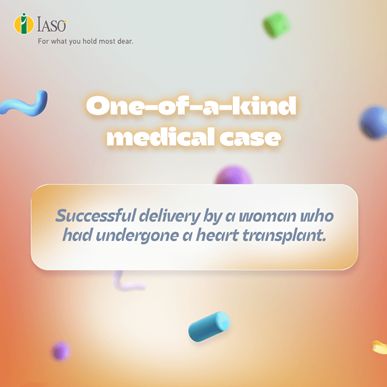
Optional Neonatal Screening
Maternity Clinic
-
METABOLIC DISEASES
Screenings for metabolic diseases include: Cystic Fibrosis (IRT), Congenital Adrenal Hyperplasia (17-OH-Progesterone) Deficiency Biotinidase (partial and total), organic aciduria, Amino Acid Absorption Deficiency, Deficiency Fatty Acid Absorption. The overall incidence is 1:1500 children.
What is neonatal screening?
The neonatal screening takes place on the second to fourth day after birth. The purpose of the neonatal screening is to detect infants who are 'suspect' for the presence of serious diseases, where early diagnosis allows clinical improvement and/or avoidance of severe clinical symptoms such as neurological, digestive, respiratory and other disorders. The Institute of Child Health provides control for only four diseases: phenylketonuria, deficiency of glucose-6-phosphate dehydrogenase (G6PD), congenital hypothyroidism and galactosemia.
What is the expanded neonatal screening?
The extended neonatal screening enables the detection of more serious diseases, some of which occur at a relatively high frequency in the Greek population, and some of which are rarer.
Specifically, high frequency diseases include cystic fibrosis, Biotinidase deficiency and congenital adrenal hyperplasia. Every year, 50-60 children are born suffering from Cystic Fibrosis -a disease affecting the function of many organic systems but the main clinical manifestations are detected in the respiratory and digestive system. Early diagnosis of this disease promotes the adoption of appropriate measures and the optimization of clinical symptoms in order to ensure the patient’s better quality of life.
As for the rarer diseases, it regards to 40 metabolic disorders (deficiency of amino acids, fatty acids and/or organic acids), the early diagnosis of which can prevent the onset of serious health problems such as mental retardation, hearing loss, visual disturbances, and seizures.
Only in case of pathologic findings are you informed by IASO and sent the results to the address specified upon admission. -
OTOACOUSTIC EMISSIONS
It is a simple, fast, painless screening test conducted in all modern maternity clinics abroad. During the examination, continuous rhythmic sounds are emitted to the neonate and the ear’s acoustic response is recorded via a special device connected to a computer. The ideal time for the performance of this testing is during the first days after birth, when neonates are asleep for the biggest part of the day. The examination can also be carried out during sleep, so the baby is not aware of it. To a significant extent, the presence of otoacoustic emissions is indicative of normal hearing.
Neonatal hypoacusia (hearing loss) frequency accounts for 3-4‰ of all newborns whereas severe hypoacusia (deafness) is present in 1‰. It is worth mentioning that the aforementioned rates also include congenital hypoacusia family history-free children. Early detected and timely managed hypoacusia during the first weeks of a neonate’s life is of great importance to a child’s speech development and cognitive and mental progress.
For this reason, the OAEs screening test, performed in all neonates in the USA and the countries of West Europe, is similarly applied to all neonates born in IASO Clinic, for the past twenty years.
It is worth noting that IASO is the first Maternity Clinic in Greece to apply this examination universally. IASO Hospital’s program is one of the largest internationally.
All the above are according to WHO recommendations. The recording of the screening test remains in the hospitalization file and its results are written down on the personal child health record (p. 15).References:
- American Academy of Pediatrics, Task Force on Newborn and Infant Hearing. Newborn and Infant Hearing loss: detection and intervention. Pediatrics 1999
- European Consensus Statement on Neonatal Hearing Screening. Audiology 1999.
- World Health Organization. Newborn and Infant Hearing Screening. Current Issues and Guiding Principles for Action. Geneva, Switzerland, 09-10 November 2009.
- S. Korres et al. Outcomes and Efficasy of Newborn Hearing Screening: Strengths and Weaknesses. The Laryngoscope 2008.
-
OPHTHALMOLOGICAL EXAMINATION
The ophthalmological examination performed at IASO Maternity Hospital investigates the possible presence of congenital abnormalities of the eyes and eyelids of the newborn. It also examines the possible presence of congenital diseases such as congenital cataract, glaucoma, congenital optic nerve and retina anomalies or the existence of an inflammation in the ocular fundus (eye ground) (e.g., toxoplasmosis) or conjunctiva (e.g. conjunctivitis). Early diagnosis and treatment of some of these diseases can be life-saving for the baby's eyesight. The recording of the examination remains in the medical file and its results are recorded in the child’s Health Book (p. 15).
References:
- Eye Examination in newborn, infant and children, Study Reaffirmed May 2007 HOSKINS CENTER FOR QUALITY EYE CARE
- American Academy of ophthalmology Pediatric Eye Evaluation, PPP-September 2012
- Multiple Strokes in a newborn, OPHTHALMOLOGY Volume 116 Issue 4 April 2009
-
OPTIONAL HIP ULTRASOUND SCREENING
The developmental dysplasia of the hip, formerly widely known as congenital hip dislocation is a common condition, present at 0.1% of births. It is a multifactorial condition; the treatment is simple, if detected early (before 6 months). At a significant proportion, it is diagnosed with clinical preventive control of the hips by a pediatrician or an orthopedic specialist, yet, a large proportion remains undiagnosed for several months.
Via the ultrasound, the morphology of the hip joint is depicted and the so-called “silent dysplasia” can be early diagnosed, leading to an early treatment. In the European countries that have implemented the universal screening of hip sonography in neonates, the rate of late diagnosed cases of dysplasia has almost disappeared and, by extension, complicated surgeries, too.References:
- Diagnostic accuracy of static Graf technique of ultrasound evaluation of infant hips for developmental dysplasia . Arch ortho Trauma Surg. 2011; 131(1):53-8
- Evolution of late presenting developmental dysplasia of the hip and associated surgical procedures after 14 years of neonatal ultrasound screening. JBJS(Br):2004;86-B:585-9
-
CARDIOLOGY EXAM & ECHOCARDIOGRAM
Heart conditions (congenital and inherited) are not rare in neonates, since 10 to 12 in 1000 neonates are born with some type of heart defect. Most of these conditions (65%) will need to be treated (usually surgically) during the first year of their lives. Early diagnosis and treatment can improve dramatically the final outcome.
In the context of screening tests for neonates, IASO introduces the Cardiology Exam & Echocardiogram, performed by experienced and qualified Pediatric Cardiologists.
It is a simple exam that is carried out at the neonatal ward of the Hospital. It complements the prenatal cardiology exam, and offers parents and the treating pediatrician the chance to rule out neonatal heart problems.
If a heart problem is detected, the parents are fully briefed and are given suitable treatment and monitoring instructions.References:
- Van der Linde D, Konings EE, Slager MA, Witsenburg M, Helbing WA, Takkenberg JJ, Roos-Hesselink JW. Birth prevalence of congenital heart disease worldwide: a systematic review and meta-analysis. J Am Coll Cardiol 2011; 58:2241–2247. doi: 10.1016/j.jacc.2011.08.025 [PubMed] [CrossRef] [Google Scholar]
- Hoffman JI, Kaplan S. The incidence of congenital heart disease. J Am Coll Cardiol 2002; 39:1890–1900. [PubMed] [Google Scholar]
- Wren C The epidemiology of cardiovascular malformations. In: Moller JH, ed. Pediatric Cardiovascular Medicine 2nd ed. West Sussex, UK: Blackwell Publishing; 2012: 268–275. [Google Scholar]
- Marelli AJ, Ionescu-Ittu R, Mackie AS, Guo L, Dendukuri N, Kaouache M. Lifetime prevalence of congenital heart diseaseα in the general population from 2000 to 2010. Circulation 2014;130:749–756. doi: 10.1161/CIRCULATION AHA.113.008396 [PubMed] [CrossRef] [Google Scholar]
-
PEDIATRIC ENDOCRINOLOGY ASSESSMENT AND DEVELOPMENTAL TEST FOR SMALL-FOR-GESTATIONAL AGE (SGA) NEWBORNS
According to international literature, low birth weight newborns have a statistically higher chance of manifesting developmental abnormalities and metabolic disorders later on in life, including:
- Shortness of stature
- Weight disorders / Obesity
- Puberty disorders (premature adrenarche / precocious puberty)
- Insulin resistance
- Cardiovascular disorders as adults
- For this reason, they require regular monitoring and early treatment.
For this reason, they require regular monitoring and early treatment. Monitoring is performed by a Pediatric Endocrinology Specialist and an experienced Pediatrician.
References:
- CONSENSUS STATEMENT: Management of the Child Born Small for Gestational Age through to Adulthood: A Consensus Statement of the International Societies of Pediatric Endocrinology and the Growth Hormone Research Society The Journal of Clinical Endocrinology & Metabolism 2007
- Children Born Small-for-Gestational Age: Postnatal Growth and Hormonal Status, Kerstin Albertsson-Wikland, Horm Res 1998
- Childhood growth of singletons conceived following in vitro fertilisation or intracytoplasmic sperm injection: a systematic review and meta‐analysis, Bay B, BJOG 2019
Available examination packages











